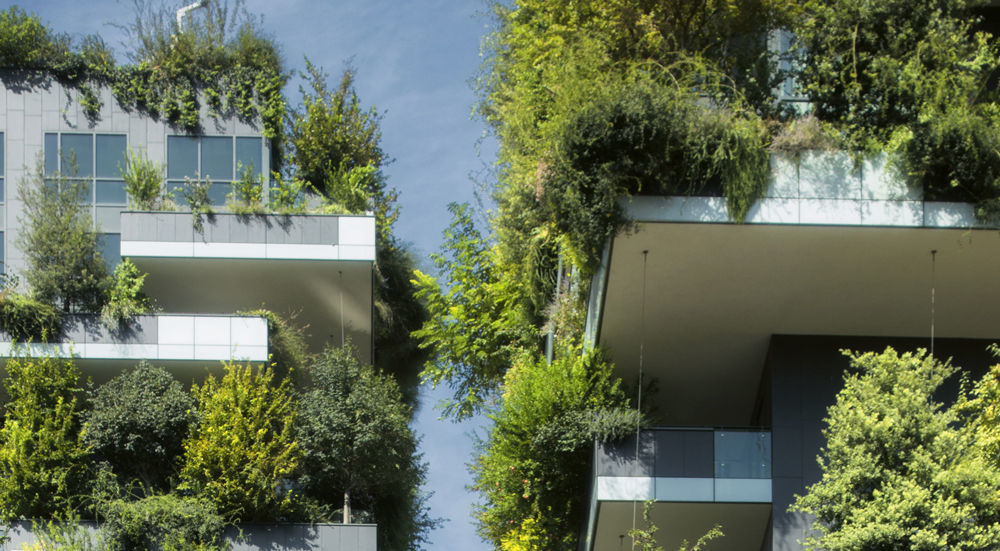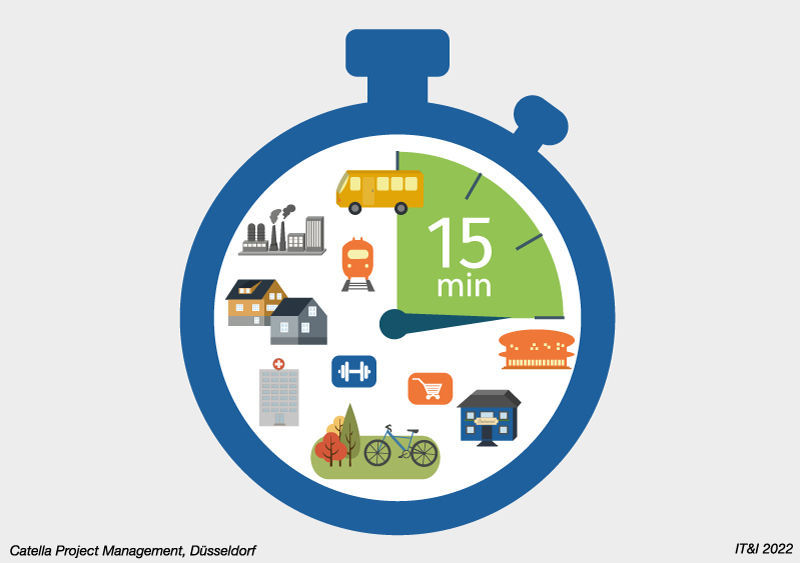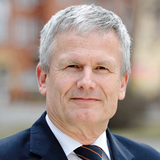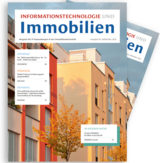The metropolis of the future – a discussion article

The village in the city
The 15-minute city is a fascinating concept. It was first outlined by Sorbonne University in Paris as a vision describing profound urban redevelopment. Everything essential – i.e. workplaces, shopping options, daycare centres, schools, leisure and culture facilities – should be reachable within 15 minutes on foot or by bicycle from one’s home. For the metropolis of Berlin, this would be a return to the manageable and compact district, i.e. “the village in the city”. Climate change and CO2-reducing measures will drive these scenarios.
Urban life is very attractive. After all, living in a city comes with benefits such as short distances to work and the range of leisure options. You spend a lot of time away from home, the pub becomes your living room, and the park or café becomes your workplace. The influx of people into cities and metropolitan areas, a long-standing trend due to the attractiveness of major cities, will increase significantly. The aim will be to proactively avoid shortages and impairments in the future. Is there a shortage of housing, high volume of traffic, lack of green spaces and insufficient human interaction? We place quite a few demands on our metropolis.

Figure 1: Workplaces, shopping options, daycare centres, schools, leisure and culture facilities should be reachable within 15 minutes on foot or by bicycle from one’s home.
The city goes green
Cities of the future will be more climate-friendly since traffic congestion and gridlock will be avoided. Overall, the car is decreasing in importance as a means of transport. A well-developed local transport system will be easily accessible with its stations and stops a maximum of 800 meters away. There will be more roads – and even cable cars at very regular intervals – to direct traffic flows as efficiently as possible. Autonomous electric cars and car-sharing concepts also enable individual mobility requirements. There will be tunnels for long-distance rail services under the metropolises. Berlin has largely achieved this, Stuttgart is implementing it, and it is being planned in Frankfurt. Conversions of large track areas as well as industrial and commercial units will ensure better functional mixes. Areas will combine residential construction, trade and services as well as leisure with environmentally friendly production processes.
The spatial integration of work, living and leisure supports the transformation of property usage. Traditional retail is decreasing in importance, in part due to online commerce. Empty real estate remains and should be revitalised for mixed uses, i.e. commercial, residential or urban gardening. Booming co-working spaces will enhance districts because their stakeholders will be consciously looking for communication and cooperation in their neighbourhood – beyond their professional needs.
Wide inner-city connecting roads, motorways and parking spaces will also not be needed everywhere. They will be decommissioned and deconstructed. This will create vegetation corridors and additional contiguous green areas with consistent reforestation that will serve an ecological function as biotopes – this is the vision of “urban forestation”. Areas like this store CO2 and can serve as priority and protected areas for groundwater conservation. As connecting aisles for the formation of fresh or cold air, they reduce urban overheating. Climate-change-induced driving rain is collected in cisterns in dense urban areas and fed into the groundwater. Urban spaces are already making great progress. There are hardly any polluted rivers and bodies of water left. Monitoring stations detect air pollution that is harmful to the environment and health. Parklands are linked throughout the city. Emission-free mobility with bicycles is already available with dense bicycle path networks. The green city is prevailing.
How smart can a green city be?
Inner-city traffic must also be significantly reduced. This could be achieved by replacing or supplementing fees for residents’ neighbourhood parking spaces with annual tickets for local transport. Commuters from outside the city will be steered to the public transport stations in the suburbs, and tickets will have to be purchased instead of parking fees – all citizen-oriented, digitised via apps and individually accessible and affordable. This will make a smart city not only possible, but also more economical, since households and families will be able to do without their own cars, unlike in rural areas.
Let’s take the scenario a step further: electric cars drive fully automatically. During the drive, passengers can read the latest news reports on a tablet, do some online shopping or book cinema tickets via a portal. From time to time, the vehicle stops to recharge at charging stations, where the wait time is short and the electricity price cheap. The price for the journey is calculated based on the capacity utilisation of the vehicle and is invoiced and paid immediately. This is exactly how convenient the mobile future could be in major cities beyond public transport. The smart city will make it possible. A “smart country” will not be available as quickly due to the lower population density and insufficient sensors in rural areas.
The smart city will promote technical, economic and social innovations with a focus on the responsible citizen. Digital participation platforms will complement political decision-making via elected bodies in major cities with forms of grassroots organisation. Local political initiatives and resident proposals on issues such as housing, transport and environmental measures can be debated directly, and the design process in the districts can be implemented in a more citizen-friendly manner. City residents can sit at home and contribute via corresponding smartphone applications, representing the nucleus of civil participation.
Wouldn’t a singularisation of the debate on public services be desirable rather than contentious discussions in assemblies?
Citizens’ suggestions may include urban gardening in the form of vertical farms or indoor farms. Instead of glass or concrete façades, climbing plants will adorn the high-rise buildings of the future. This will enable vertical green areas with air cushions and evaporation to optimise the thermal conditions on buildings and create additional shade. Temperature fluctuations will be minimised to a significant extent in all seasons, reducing the need for air conditioning.
In addition, green areas on roofs will be able to store precipitation. Plants will protect the underlying bitumen and plastic sheeting and thus prevent direct sunlight. This vegetation layer will improve thermal insulation and filter pollutants and dust from the air. The microclimate will see a positive development and cool down. Roof areas will even allow agricultural use as gardens with crops and ornamental plants. Unused real estate can also be reclassified for agricultural use. With their own irrigation systems, green façades will also be able to produce fruits, vegetables and herbs that support biodiversity and insect diversity. With short transport routes, up to 40 percent of the demand for vegetables and fruits will be available in sufficient variety to end consumers in the district, which in turn will help to reduce logistics traffic.
Does all of this sound like it is still up in the air? We can already see it. After all, such models can go a long way towards achieving the 1.5-degree goal and thus avoiding further global warming. All stakeholders can make a sustainable contribution to this aim.
Author:

Ernst Hubert von Michaelis
Sales Representative
PROMOS consult
Other articles by this author:
- Article "We need to create additional housing – but how?"
- Article "The metropolis of the future – a discussion article"
- Article "Co-working – Find a workspace and network at the click of a mouse"
- Article "Less is more – an alternative way of living"
- Article "Micro living – the future of living as a new asset class"
- Article "The digitisation of retail – in-store, online, mobile... Wasted opportunities or risks?"
- Article "Accounting for leasing relationships in accordance with the IFRS 16 standard with low administrative expense"
- Article "Working from home is passé... the new trend is working on the move"
- Article "All that is possible with individual mobility"


